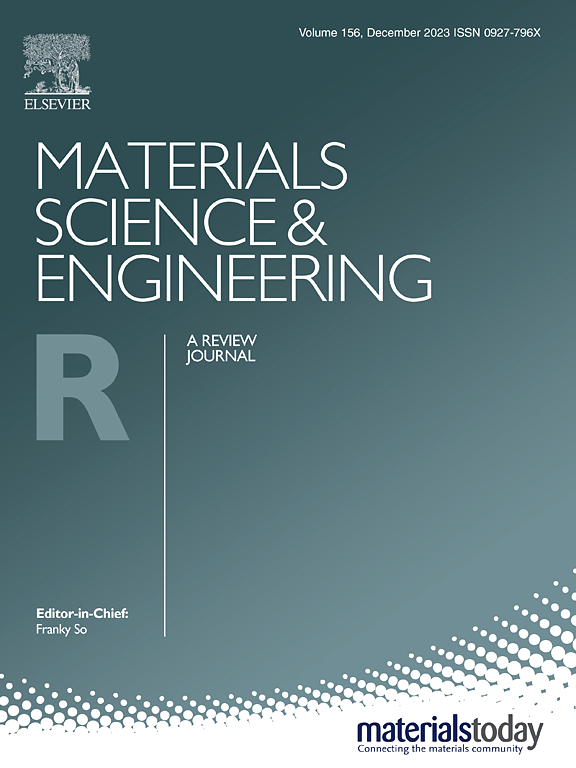Photodetectors based on two-dimensional materials/ferroelectrics hybrid system: Physics, structures, and applications
IF 31.6
1区 材料科学
Q1 MATERIALS SCIENCE, MULTIDISCIPLINARY
引用次数: 0
Abstract
Photodetection technology is vital to the evolving information society, with two-dimensional (2D) materials photodetectors emerging as promising candidates due to their unique electronic and optical properties. Despite significant advancements, 2D material photodetectors still struggle with limitations in responsivity, detectable wavelength range, response time, and polarization sensitivity. To address these challenges, researchers are actively exploring the integration of ferroelectrics as functional materials with 2D material photodetectors. The synergy between 2D materials and ferroelectrics introduces unique working mechanisms and new possibilities for high-performance photodetectors. This article reviews the latest developments in 2D materials/ferroelectrics hybrid system photodetectors. It begins with an introduction to the fundamentals of photodetectors and materials. The review then explores the use of ferroelectric properties, such as polarization, piezoelectricity, and thermoelectricity, to modulate the hybrid system. The role of ferroelectrics in enhancing the performances of hybrid system photodetectors is highlighted by comparing different structures, supplemented with the showcase of various applications. The article concludes by summarizing the current status of this field and suggesting future research directions, aiming to guide the design and application of next-generation 2D materials/ferroelectrics hybrid system photodetectors.
基于二维材料/铁电体混合系统的光电探测器:物理、结构和应用
光探测技术对不断发展的信息社会至关重要,二维(2D)材料的光电探测器由于其独特的电子和光学特性而成为有前途的候选者。尽管取得了重大进展,但2D材料光电探测器在响应性、可探测波长范围、响应时间和偏振灵敏度方面仍然存在局限性。为了应对这些挑战,研究人员正在积极探索将铁电体作为功能材料与二维材料光电探测器相结合。二维材料和铁电体之间的协同作用为高性能光电探测器引入了独特的工作机制和新的可能性。本文综述了二维材料/铁电混合系统光电探测器的最新进展。首先介绍光电探测器和材料的基本原理。然后探讨了利用铁电性质,如极化、压电和热电,来调制混合系统。通过对不同结构铁电体的比较,强调了铁电体在提高混合系统光电探测器性能方面的作用,并辅以各种应用的展示。文章最后总结了该领域的研究现状,并提出了未来的研究方向,旨在指导下一代二维材料/铁电混合系统光电探测器的设计与应用。
本文章由计算机程序翻译,如有差异,请以英文原文为准。
求助全文
约1分钟内获得全文
求助全文
来源期刊

Materials Science and Engineering: R: Reports
工程技术-材料科学:综合
CiteScore
60.50
自引率
0.30%
发文量
19
审稿时长
34 days
期刊介绍:
Materials Science & Engineering R: Reports is a journal that covers a wide range of topics in the field of materials science and engineering. It publishes both experimental and theoretical research papers, providing background information and critical assessments on various topics. The journal aims to publish high-quality and novel research papers and reviews.
The subject areas covered by the journal include Materials Science (General), Electronic Materials, Optical Materials, and Magnetic Materials. In addition to regular issues, the journal also publishes special issues on key themes in the field of materials science, including Energy Materials, Materials for Health, Materials Discovery, Innovation for High Value Manufacturing, and Sustainable Materials development.
 求助内容:
求助内容: 应助结果提醒方式:
应助结果提醒方式:


